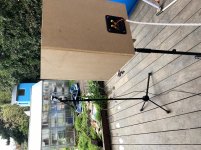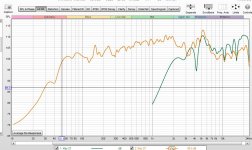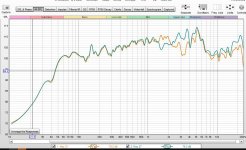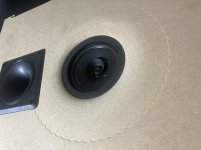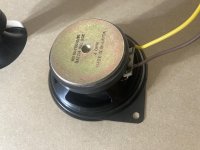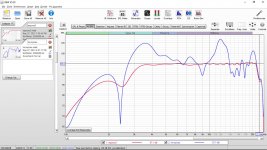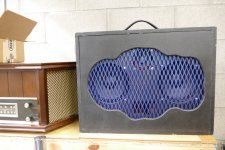Here is another one. Highly recommended:
C-Note MT Bookshelf Speaker Kit Pair with Knock-Down Cabinets
C-Note MT Bookshelf Speaker Kit Pair with Knock-Down Cabinets
You should change the title of this thread so it's not so misleading. I had a bunch to add but alas.
I have not read this thread, but here is my contribution to cheap speakers
ultra cheap mtm
That setup wins over this one! Awesome 🙂
The cheapest Speaker with very good Sound and good Quality would be a good headline.You should change the title of this thread so it's not so misleading. I had a bunch to add but alas.
Here an example: Monacor SPH-60X (English/German)
MONACOR: SPH-60X
MONACOR: SPH-60X
available since 1976
Last edited:
The cheapest Speaker with very good Sound and good Quality would be a good headline.
Here an example: Monacor SPH-60X (English/German)
MONACOR: SPH-60X
MONACOR: SPH-60X
available since 1976
I've used the SPH-60X, SP-50X, SPH-68X/AD for a number of speakers, they are really good except for the top end. But they are rarely cheap though and they need some EQing for the mids (baffle step). I loved the Klang + Ton CT 193 (German DIY-speaker/hifi magazine, "cheap trick"), a horn reflex.
CT 193 (Strassacker, German shop)
This is a thread to help me keep track of the 'cheapest speakers' I build. Feel free to add your own.
Well, your speaker may be cheap but your diagram is misleading because of the scaling. Peaks and dips over a range of 25dB (not counting the top end) isn't exactly HiFi. If it's just "I've got the cheapest" then fine, take anything from eBay or Alibaba and put a piezo on it.
Aside from that, measuring a speaker like that:
makes your measurements practically useless because of the reflections of the floor.
seems I can't find the Monacor SPH-60X here in Australia, The room I have for measuring is very small, what would you suggest as a direction? Or am I using REW incorrectly?
Baffle step, woofer only good to ~2K, tweeter from 5K.
Not good, these are not suitable together.
Time to try something else.
Not good, these are not suitable together.
Time to try something else.
Attachments
seems I can't find the Monacor SPH-60X here in Australia, The room I have for measuring is very small, what would you suggest as a direction? Or am I using REW incorrectly?
Set up the mic and the speaker how they got both the farthest away from reflecting surfaces like walls, furniture, floor etc. With a non-gated measurement of the impulse response the first reflection is visible, it looks very similar to the direct impulse but with a smaller amplitude. The window/gate should be set just before the first reflection. With the gated impulse measurement REW should be able to show the decay waterfall.
'Should' because I don't use REW, I don't know, you can find help and useful existing threads here in the forum. Alternatively you could have a look into the manual.
$5 ea, 3.5in, found at local junk store. "Pete's Bargain Centre"
Melbourne in 7-day lockdown, must drop past and see if I can grab some more before midnight
The piezo horn can be nice if you cross it over at 4+ kHz. A serial cap, calculate it (one of the few times you actually can roughly calculate something in a crossover) with a 22 Ohm resistor parallel to the piezo, use ~20 Ohm as impedance to calculate it, probably 1,5-2µF.
The fullrange should be able to reproduce treble at this size, looks like ~8cm. It could be a good fit for a PC speaker system. Nice work on the waveguide, really neat!
smash the FR flat with EQ and does it matter? ~$2 USD
To me yes, because I don't run my setup from a PC with free EqualizerAPO
But damn, a secondhand PC could be cheaper than the passive components.
https://au.element14.com/mcm-audio-...uare-piezo-horn-tweeter/dp/2827672?st=tweeter
To me yes, because I don't run my setup from a PC with free EqualizerAPO
But damn, a secondhand PC could be cheaper than the passive components.
https://au.element14.com/mcm-audio-...uare-piezo-horn-tweeter/dp/2827672?st=tweeter
Attachments
I have not read this thread, but here is my contribution to cheap speakers
ultra cheap mtm
While certainly a little more expensive, I beleive your Betsy with ikea cabinet IS something as well 😎
Why don't more people use electrolytic capacitors in their crossover.
Difficulty to find precise capacitance value sometimes ?
Why don't more people use electrolytic capacitors in their crossover.
Just a tad more resistance in the signal path, and voila, they are in audiophile depression.
I built a cheap little transmission line speaker based on this driver.
Visaton FR 10-8 4" Full-Range Speaker
The sheet of MDF I used to make it was 10 bucks. Obviously the price hike on wood kind of changes that dynamic.
Visaton FR 10-8 4" Full-Range Speaker
The sheet of MDF I used to make it was 10 bucks. Obviously the price hike on wood kind of changes that dynamic.
There is an audiophile depression when it is cheap... here we like it shiny with big engines and chromed loudspeakers a la Wilson Audi... Fat&Furious.
While not the cheapest, my build was made to a budget with three main goals:
It had to sound good loud since outdoor amplified loud music was on the menu.
It would be used for testing new and unpredictable amp designs, some of which are in the 100+ WPC range, so cheap drivers had to be used. High power handling capability is a requirement.
Small size and light weight is needed. One person can carry a pair.
I built these nearly 10 years ago. I did two outdoor concerts where each cabinet ate the output of a 125 WPC tube amp pushed to the edge of clipping doing PA for every instrument in the band except bass guitar and drums. We tuned the volume to match the level of a drummer known to beat the crap out of his drums. The bass player had a class D amp with enough power to knock people down.
Despite serious abuse I have not blown a driver yet, and have only needed to tighten the bolts holding them in a few times.
They are an MTM design. The 6.5 inch drivers are Dayton Audio PA165-8's. I got them when they were $20 each. The tweeter is a cheap "Titanium Bullet Tweeter" that came from one of the low buck vendors, Pyle I believe. The crossover is a few poly caps wired in parallel feeding an L-pad. I turn them completely off when playing a distorted guitar amp through these boxes.
Being used for testing here:
75 watt per channel triode mode tube amp prototype - YouTube
It had to sound good loud since outdoor amplified loud music was on the menu.
It would be used for testing new and unpredictable amp designs, some of which are in the 100+ WPC range, so cheap drivers had to be used. High power handling capability is a requirement.
Small size and light weight is needed. One person can carry a pair.
I built these nearly 10 years ago. I did two outdoor concerts where each cabinet ate the output of a 125 WPC tube amp pushed to the edge of clipping doing PA for every instrument in the band except bass guitar and drums. We tuned the volume to match the level of a drummer known to beat the crap out of his drums. The bass player had a class D amp with enough power to knock people down.
Despite serious abuse I have not blown a driver yet, and have only needed to tighten the bolts holding them in a few times.
They are an MTM design. The 6.5 inch drivers are Dayton Audio PA165-8's. I got them when they were $20 each. The tweeter is a cheap "Titanium Bullet Tweeter" that came from one of the low buck vendors, Pyle I believe. The crossover is a few poly caps wired in parallel feeding an L-pad. I turn them completely off when playing a distorted guitar amp through these boxes.
Being used for testing here:
75 watt per channel triode mode tube amp prototype - YouTube
Attachments
- Home
- Loudspeakers
- Multi-Way
- The CHEAPEST speakers you can build
